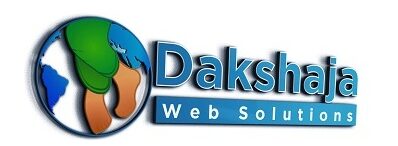What is CRM?
CRM stands for customer relationship management. A CRM system is a web application that All business use it to organize information about their customers, leads, and other contacts. But a CRM system is more than just a list of contacts. It contains customers’ details and history of their transactions with an organization, along with information about those customers’ place or status in the sales process. CRM is the best software for any business.
Many CRM systems can hook into financial and accounting systems to help organizations track earnings and costs. They can also provide analytics that enable a business to better predict a customer’s future needs.
Most open source CRMs system only require a web server, database, and browser to run. Let’s examine six open source tools designed to make managing customer relationships.
Does Your Business Need One?
You know the challenges that you face regarding timely interactions with customers. But I’m sure the question in your mind right now is, “Do I need a CRM?”
The rest of this article will answer that pressing question.
Three aspects crucial to your organization’s success are:
- Customer details
- Sales management
- After sales support
Let’s examine common scenarios in each of them.
Customer Details:
Scenario 1: You don’t have a consolidated and up-to-date database of your customers. Details are scattered in your and your salespeople’s phones, or Excel sheets and Tally.
Scenario 2: One of your people wants a customer’s contact details. Because he can’t find it, he asks you about it. Even you’re not sure if those details are relevant because you had updated them two years ago.
If your organization is missing a usable customer database, with no second thought, it’s a sign that you need a CRM system. This might appear like a small issue right now but will have far-reaching repercussions in the long run.
CRM software is a single location to store all most important details of your customers. Not just contact numbers, but also what they purchased and when and how many interactions they’ve had with you, and so on.
If it’s cloud-based, your team can access it even on the go.
Sales Management
Scenario 1: During reviews, your sales people talk about the same recycled pipeline month after month. When you point it out, they give reasons like “the concerned person is not available” or “meetings are in progress.” You rightly doubt the credibility of these words but have nothing to prove it.
Scenario 2: You’ve commissioned a digital marketing agency to generate leads. In every week, the agency sends tons of leads, but you have no idea whether your team took action on them. And You’re also unaware about how long each sales person takes to close a deal, or whether the leads are relevant for your product.
Scenario 3: For long, no sales person calls a customer or prospect. Sometimes, they receive calls from three sales people within a day. The irate customer wonders aloud whether your people are playing a prank or what?
If these scenarios are common place in your organization, you’re bleeding money on resources that interact poorly with your customers and prospects. Or worse, on resources that don’t interact with them at all.
And you wonder why sales dropped.
When you deploy CRM software, sales people will update their meeting status in it. You can use these status to track their progress and ‘call their bluff’ if they’re running in circles.
A CRM tool also let you track the time between a lead being assigned to a sales person and first contact. When you bring this time down, you increase chances of conversion. You also know that whether the leads you receive from campaigns are relevant or not. Thus, you can provide feedback to your marketing agency about the same and improve your ROI.
After Sales Support
Scenario 1: An irate customer calls you because his issue hasn’t been addressed for over a week. When you raise the concern with your support team, they claim to have resolved it.
Scenario 2: Your after-sales team solves an issue for an customer, which is different from what he raised. And you cannot figure out who’s right – your team member or the customer.
This often occurs due to lack of clarity in documentation and understanding. It involves rework, time wastage, and a potential churn of customers.
A CRM tool comes into place. This means it doesn’t stop with a sale. It enables you to add support tickets and track their status.
If your support team misses a deadline to resolve an issue, the tool will shoot you an email. This means you can take action before the issue escalates. It also makes your support team more accountable since you can track their effectiveness.



